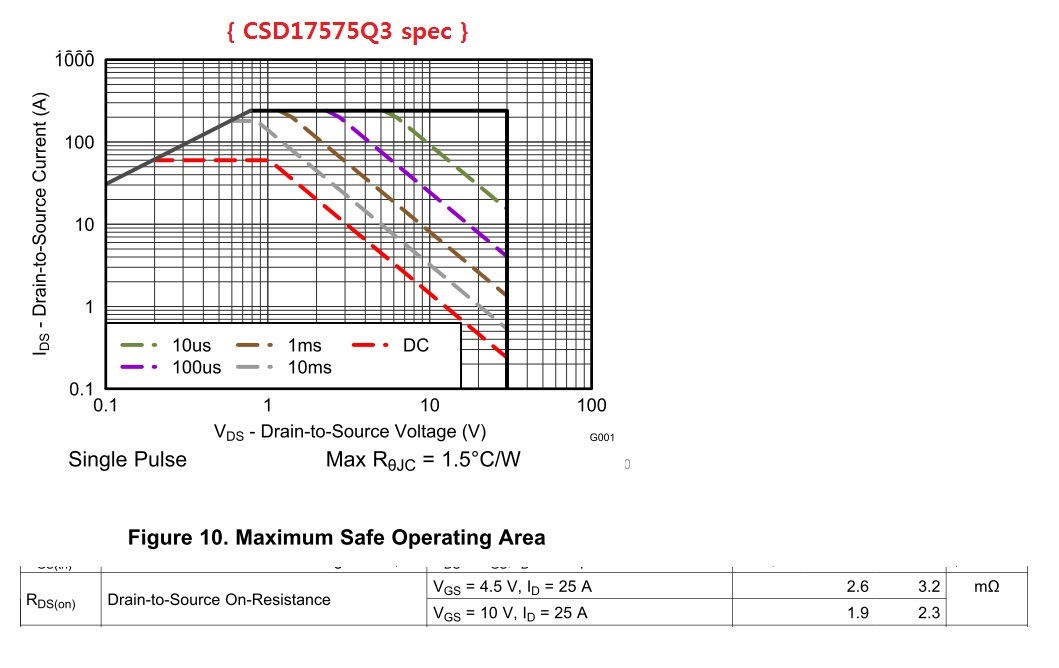Other Parts Discussed in Thread: CSD17581Q3A,
hi team
CSD17575Q3 has more smaller Rdson compared to CSD17581Q3A.
so, I think CSD17575Q3 has better overall performance than CSD17581Q3A.
however, I found interest thing at SOA Curve.
I expected that CSD17575Q3 would be more better SOA curve than CSD17581Q3A over the entire Vds range,
but in fact, CSD17581Q3A has more good performance especially for 100 usec and 10 usec lines above Vds = 20V ~ 30V range.
[Q1] CSD17581Q3A has poor Rdson than CSD17575Q3,
but may I know why CSD17581Q3A showes better SOA at 100 usec and 10 usec lines above Vds = 20V ~ 30V range ?
[Q2] I think SOA curve is at Tc = 25 degree.
do you think CSD17581Q3A will still has better SOA curve even at Tc = 80 degree than CSD17575Q3 ?



